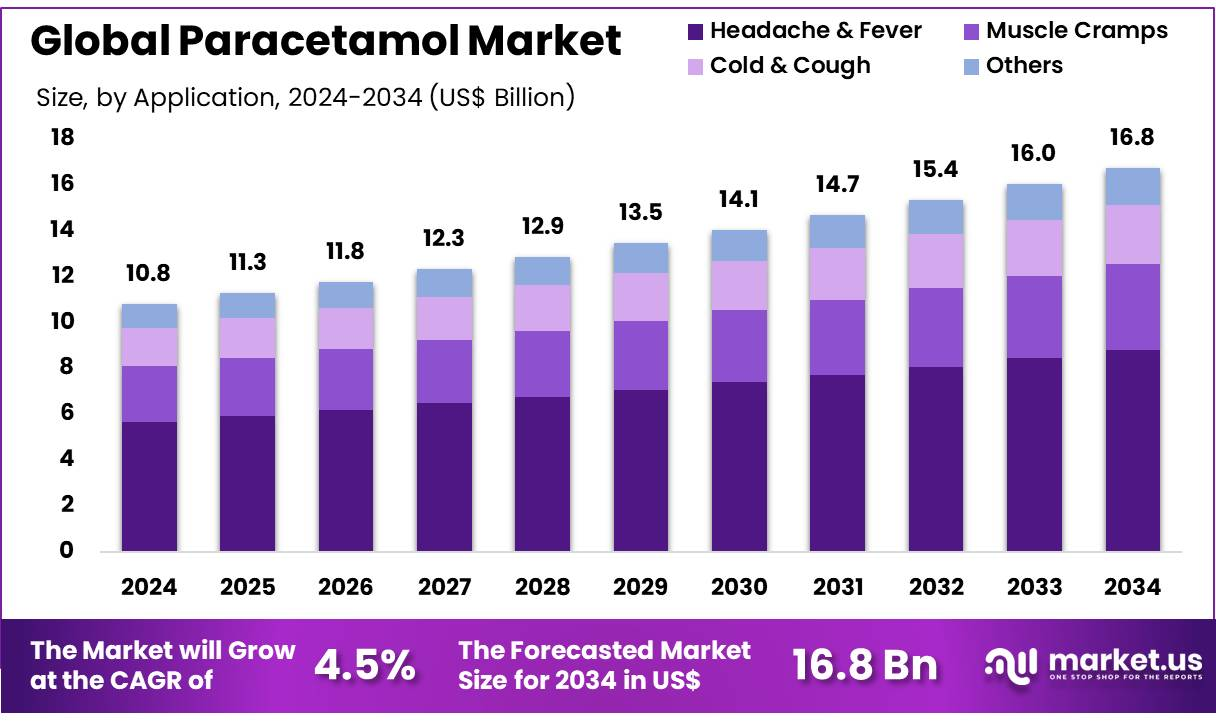The global paracetamol market is projected to reach US$ 16.8 billion by 2034, up from US$ 10.8 billion in 2024. This growth reflects a steady CAGR of 4.5% from 2025 to 2034. Paracetamol remains one of the most widely used analgesics and antipyretics globally. The market is primarily driven by rising cases of fever and pain-related conditions. Increasing demand for over-the-counter (OTC) pain relief medications is also a significant growth driver across developed and developing regions.
In 2024, North America led the paracetamol market with a substantial revenue share of 36.8%, valued at US$ 4.0 billion. This dominance is largely due to widespread consumer access and strong regulatory oversight. The U.S. Food and Drug Administration (FDA) ensures safe usage by controlling labeling and distribution. Regulatory bodies in North America actively monitor the use of paracetamol. This regulatory focus strengthens public trust and contributes significantly to market growth in the region.
The FDA’s Adverse Event Reporting System (FAERS) also plays a key role in tracking safety. Though not a direct market indicator, FAERS processed over 1 million adverse drug event reports in 2022. This highlights the scale of medication use, including paracetamol, in the U.S. Continuous monitoring through FAERS supports data-driven decisions. It enhances the credibility and safety assurance of widely consumed medications like paracetamol.
Public health institutions such as the National Institutes of Health (NIH) recommend paracetamol for treating mild to moderate pain and fever. These endorsements further boost its use across North America. The consistent use of paracetamol in national health guidelines keeps it in high demand. Its role in non-prescription drug markets is firmly established. This makes North America a mature and highly influential regional market.
Looking ahead, the Asia Pacific region is expected to witness the fastest CAGR during the forecast period. Growth is driven by population expansion, increased healthcare access, and improved infrastructure. Many countries in Asia Pacific are enhancing their public health systems. The World Health Organization (WHO) also promotes access to essential drugs, including paracetamol. Efforts to strengthen primary healthcare services have made affordable medicines more accessible. This regional trend positions Asia Pacific as a rapidly emerging market in the global landscape.



